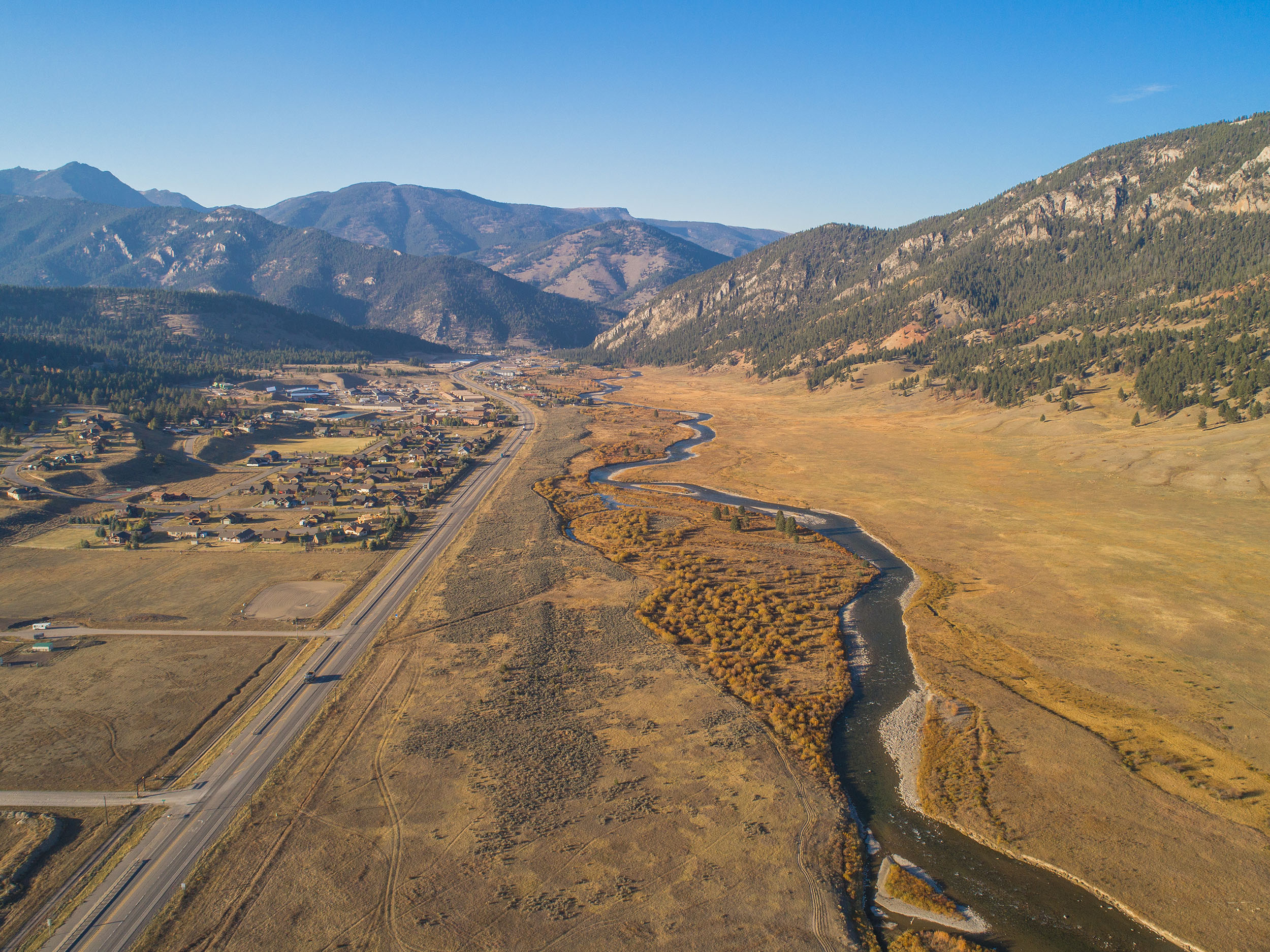A majority of residential and commercial developments in Big Sky operate on septic systems, posing a significant threat to Gallatin River health. Credit: Chris Kamman
A healthy Gallatin River begins in your home.
On its way to the Gallatin River, water from rain and snowmelt flows across and through the landscape. This runoff picks up and carries natural and human-made pollutants, known as nonpoint source pollution.
Excess nitrogen is the most pressing nonpoint source pollution issue in the Big Sky area. In a natural system, nitrogen stimulates aquatic plant growth. However, excess nutrients feed algal blooms, which can cause a cascade of negative effects in aquatic ecosystems. Malfunctioning septic systems are one the leading causes of excess nitrogen in our watershed.
How does a septic system work?
A septic system treats wastewater on-site, rather than collecting and transporting it to a wastewater treatment plant. Wastewater is produced when you flush the toilet, take a shower, or wash the dishes. Wastewater flows out of your house and down one main sewer line to a septic tank.
The septic tank stores raw waste long enough for the solids to settle out. Oil, grease, and soap suds float to the top (scum) while organic waste and other heavy solids settle to the bottom (sludge). Bacteria partially digest both scum and sludge. However, undigested solid waste must be regularly pumped from the septic tank to avoid overloading the system.
Next, liquid waste flows to the drain field for treatment. Wastewater gradually seeps from the drain lines into the ground where soil naturally filters out the remaining solids and organic matter. Tiny microbes living in the soil break down harmful bacteria and pathogens. Excess water over a short period of time can flood a drain field.
Finally, treated wastewater percolates into a groundwater aquifer. This water may be pumped out of the aquifer by a well or flow to recharge nearby rivers and streams.
What is septic smart?
A clean Gallatin River begins in your home. Wastewater from malfunctioning septic systems is one of the leading causes of elevated nutrients in streams in the Big Sky area. In excess, nitrogen negatively affects recreation and aquatic life.
Contaminated groundwater may end up in your well. Overloaded systems leak bacteria, nitrogen, and viruses into the groundwater. In Big Sky, wells pump water from the ground for household use. Contaminated well water can spread diseases and other contaminants to your family or community.
Regular maintenance saves you money. Replacing a malfunctioning system can cost $8,000 to $12,000, while regular maintenance costs about $200 to $400 every three to five years. In addition, malfunctioning systems reduce property values, hamper the sale of your home, and may even pose a legal liability.
How do I know that my septic system is malfunctioning?
You might notice one or all of the following: Slow draining sinks and toilets; bacteria in well water; strong odors; bright-green grass over drain field; or soft ground or effluent pooling on your lawn.
Septic care and maintenance basics
Perform regular maintenance by cleaning the effluent filter every six months and inspecting the solids in your system annually. Pump the tank when indicated by inspections, generally every three to five years.
A well-maintained septic system is an investment—protect yours. Don’t park cars or drive over the drain field, don’t plant trees or deep-rooted plants near your system, and keep roof drains, sump pumps, and other rainwater drainage systems away from the drain field.
Be sure you’re disposing of waste properly. Flushable does not mean septic safe. Only human waste and toilet paper are flushable. Disposable means it belongs in the trash. Garbage disposals contribute additional solid waste that could overload your septic system.
Septic systems are delicate ecosystems containing living organisms that treat wastewater. Pouring chemicals down the drain can kill microbes and damage your septic system.
By regularly maintaining you septic system, you are doing your part to protect the Gallatin for future generations. If you have additional questions about your septic system, email Director of Conservation Emily O’Connor – emily@gallatinrivertaskforce.org.

